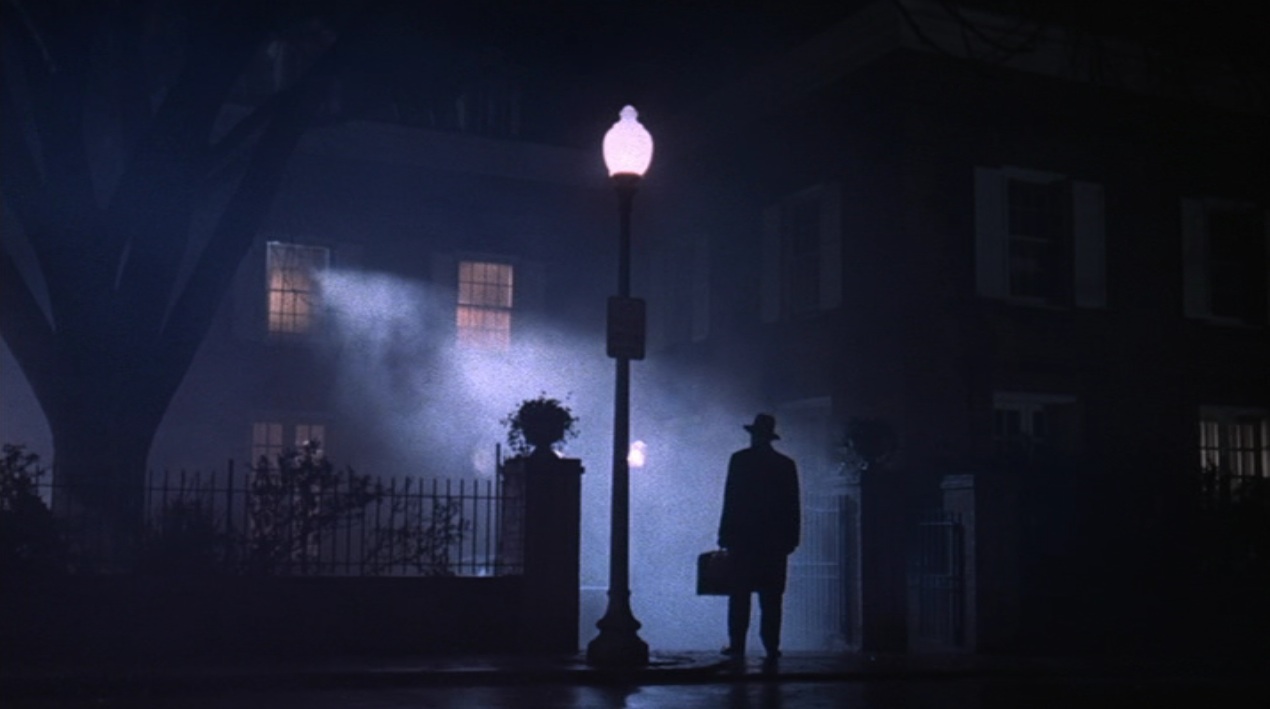
Halloween is almost upon us, so what better time to round-up a list of the most scariest films of all time? Before diving into these suspense-filled nightmares carefully wed to celluloid let’s take care of a little house cleaning to clarify how such daunting a task of presenting only 30 films under the banner of “best horror movies of all time” was determined.
There’s a tendency amongst horror fans to venerate their films, and this explains the inclusion of many genre classics in this list. Also, while cinematic masters like Hitchcock could have easily dominated this list, only his most influential shocker is here, similarly the vast and valuable output of Hammer Studios was narrowed down to just one selection, and ditto such directors as Dario Argento, Mario Bava, and George Romero.
Pains were taken to include at least one film from the likes of Lovecraft, one choice cut featuring Vincent Price, one representative of the Universal Studios classic horror icons––all worthy of the list––as well several recent selections were added into the mix to emphasize the continued delectable state of marvellous modern horror.
True, J-Horror is underrepresented (including Kwaidan as we just had to limit our ghost stories to allow room for others), as are splatter films (all due respect to Lucio Fulci, Peter Jackson and Sam Raimi, we love your movies but they didn’t make the cut this time), found footage freakouts (yes, the Blair Witch Project was a game changer but alas, we passed you by for brevity), many horror-comedies aren’t dominant either (with regards to Shaun of the Dead and many others) as we decided to cut lean and go for the ghoulish gold.
We touched on all the tropes, the major nightmare manufacturers, the icons, the eras, the classics, and the bloody benchmarks. While there may be a few regrettable omissions this list is pretty unruly, prodigious, and terrifyingly transcendent.
These horror films are the apogee of the genre and are guaranteed to curdle your blood, raise your hairs, and have you howling in terror, titillation, and excitement.
You’ve been warned, now bravely go forth if you dare.
30. It Follows (2014)
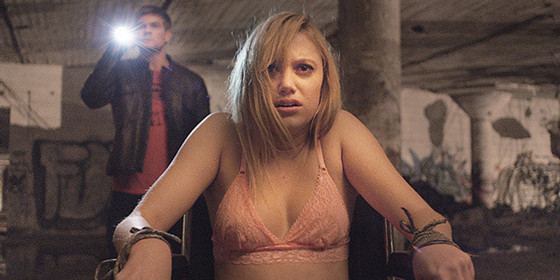
Remember the name David Robert Mitchell. His 2014 old school horror film, It Follows, is a keenly observed, expertly lensed, micro-budgeted miracle steeped in atmosphere––with a genius Goblin-inspired soundtrack from Disasterpeace––that had genre fans shrieking in delight, when not cowering in fear, of course.
Deliberately pastiching ‘70’s and ‘80’s slasher films where teens are routinely punished for being sexually active, It Follows slyly works in alternate allusions and textures to these tropes, with a feminist slant and De Palma-esque flourish to spare.
With a breakout performance by Maika Monroe as Jay our ill-starred heroine battling a sexually transmitted curse that shape-shifts into some of the creepiest ghouls going. This is the film that rescued indie horror from torture porn and proved that modern horror can be a compendium of what’s gone on before and still be transcendent, terrifying, and teeming with interpretations. Gold!
29. Let the Right One In (2008)
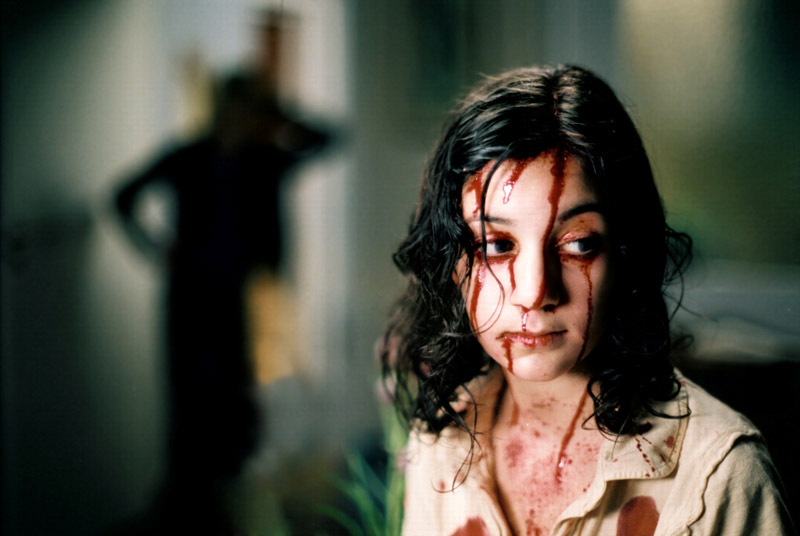
Based off of John Ajvide Lindqvist’s novel from 2004 (he also wrote the screenplay), Tomas Alfredson’s Swedish vampire film pumps new blood and artistry into the vampire milieu.
Let the Right One In works in a myriad of praiseworthy ways; as coming-of-age tale, romance, horror, even something of a comedy, all with an arthouse sensibility and an emotional depth that is as rare as it is refreshing. Oskar (Kåre Hedebrant) and Eli (Lina Leandersson) are both luminous as two lost and lonely kids—one a vampire—who, for a time, need one another, and need to make sense of the world.
The ensuing drama is an enduring classic, whose American remake from 2010 by Matt Reeves, Let Me In, is also worth watching (though does fall short of this version considerably).
28. Audition (1999)
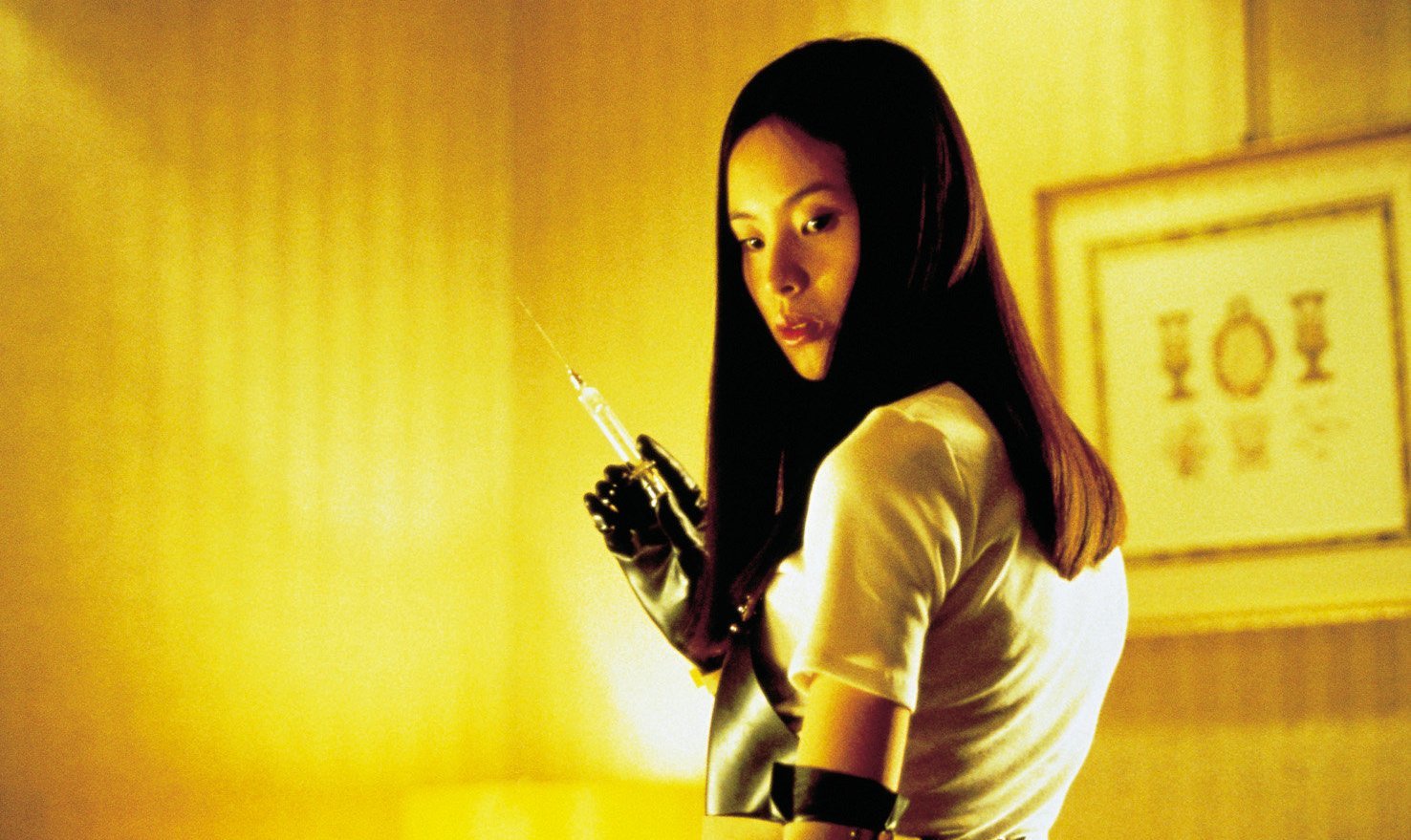
J-Horror gets mad props here with Takashi Miike’s audacious Audition. Thanks to Hideo Nakata’s Ringu (1998) the year before, contemporary horror fare from Japan was suddenly being taken seriously and this allowed a treacherous, satirical genre mishmash like Audition––part melodrama, part nimble nightmare––to further establish the Land of the Rising Sun’s affinity for fright.
Lonely widow Shigeharu Aoyama (Ryo Ishibashi) runs a video production company and, with good intentions mostly aimed at his motherless adolescent son, begins auditioning actresses for a fake role in a fake film in hopes of finding himself a girlfriend, and his son, a matron. Enter Asami (Eihi Shiina) and a blossoming romance that, by the film’s horrifying third act morphs into an ultraviolent thriller.
This is an avant-garde offering from Miike, and while it may have helped popularise “torture porn”––the good with the bad I suppose––its gender role reversal is refreshing, and it heavily influenced a new generation of genre luminaries like Eli Roth, Adam Wingard and Jen and Sylvia Soska. Audition is an overwhelming and unforgettable experience.
27. The Descent (2005)
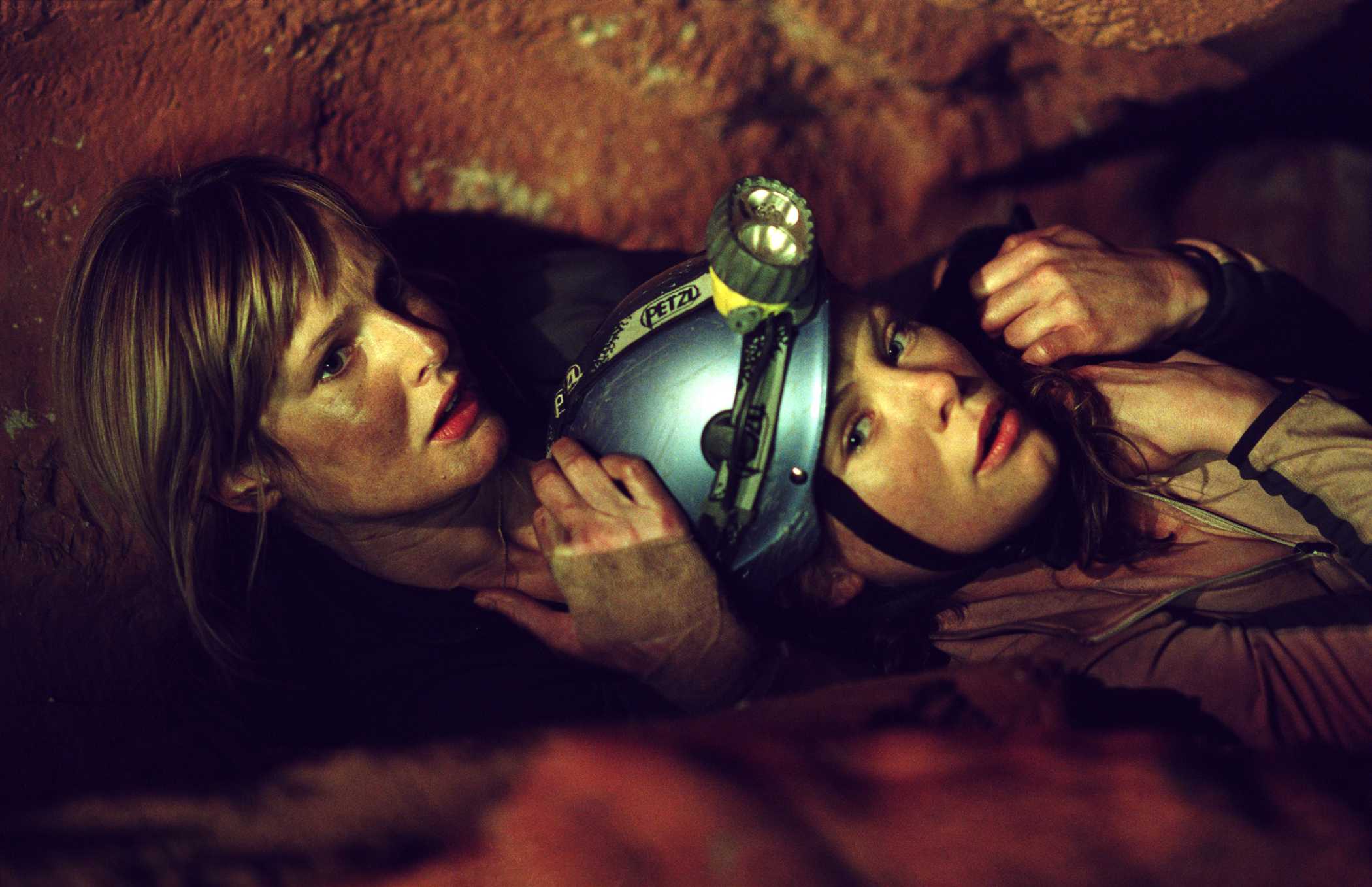
Some real serious shit goes down in The Descent. That wasn’t even just an excuse for a bad pun (sorry, not sorry). Uneasily dactylic and startling from the get-go, writer/director Neil Marshall weaves the lives of six friends together in an increasingly tight-knit underground cave system through the Appalachian Mountains.
For Sarah (Shauna Macdonald) and Juno (Natalie Mendoza), their bittersweet past surfaces as the women discover, most grotesquely, that they are not alone in the crumbling, unmapped, dripping, awful, nasty-ass caves. This is what happens when a thoroughly solid drama also happens to be a horror: stirring character development, palpable tension submerging into madness, unforgettably frightening creatures, and it’s just so awesome that it’s an all-woman cast.
Even while bloodily contending with predatory subhuman mutants these dames get catty retribution on each other––so no, not even stabbing gruesome monsters in the face together will smooth things over regarding that time someone maybe slept with someone’s hubby. Water under what fucking bridge?
26. Kill List (2012)
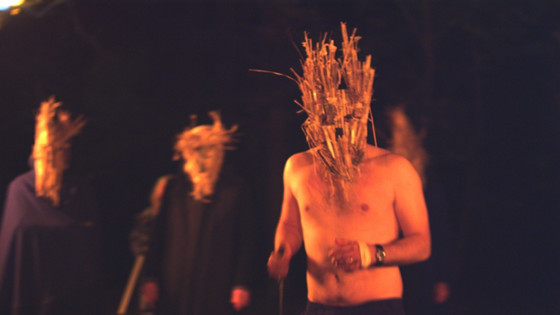
Brit badass Ben Wheatley is one of the most exciting filmmakers around and his sophomore film, 2012’s Kill List, is a relentless, and tense thriller that subverts expectation and morphs into what may well be the most frightening film you’ve ever seen, we shit you not.
Neil Maskell is Jay, a former soldier now turned hitman suffering from PTSD, reluctantly talked into taking another assignment by his best friend and partner, Gal, played by Wheatley regular Michael Smiley (A Field in England).
Kill List is a deliberate slow burn to start, establishing a mood and a tone that eventually and rewardingly ratchets tension and builds anxiety. As the plot takes many unpredictable turns, humor is present to diffuse the mounting mental pressure, Wheatley works the audience, making us anxious, uneasy, and on edge.
The last half hour is all edge-of-your-seat suspense and the final scene is as unforgettable as it is disturbing and, ultimately, inexorable. In a deft and bloody flourish, Wheatley and co-writer Amy Jump (also his wife) have upped the ante of what the genre can do with this shocking showpiece.
Kill List is an earthquake of a picture that, once seen, you’ll never be able to forget it.
25. 28 Days Later (2002)
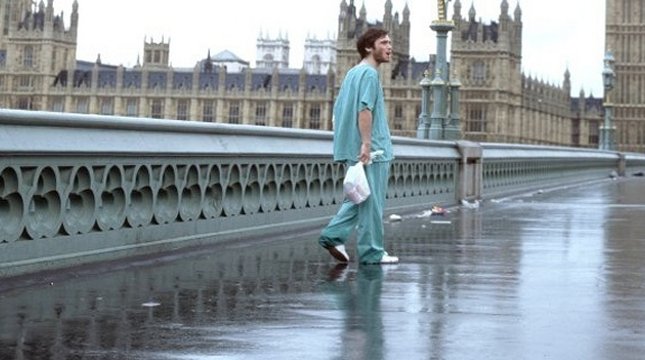
Danny Boyle’s post-apocalyptic horror film 28 Days Later reworks and revives the zombie genre by giving it political figuration, humanist tragedy, and style to spare.
Jim (Cillian Murphy) is a bicycle courier who awakens in a London hospital from a coma 28 days after a contagion has hit humanity hard. This virus induces terrible rage in those affected via blood and saliva, so while technically not a zombie bacillus––got that nerds, it’s not your atypical zombie apocalypse––it uses all those familiar tropes and can therefore be classified a zombie film.
So Sunny Jim soon pairs with other survivors––including a breakout performance from the sensational Naomie Harris––and the film focuses on their struggles and sorrows as they rise to occasion in a frightening new reality. Provocative, playful, and told with tireless energy, 28 Days Later is a great character-driven panic attack that hard-edged horror fans rightfully revere.
24. An American Werewolf in London (1981)
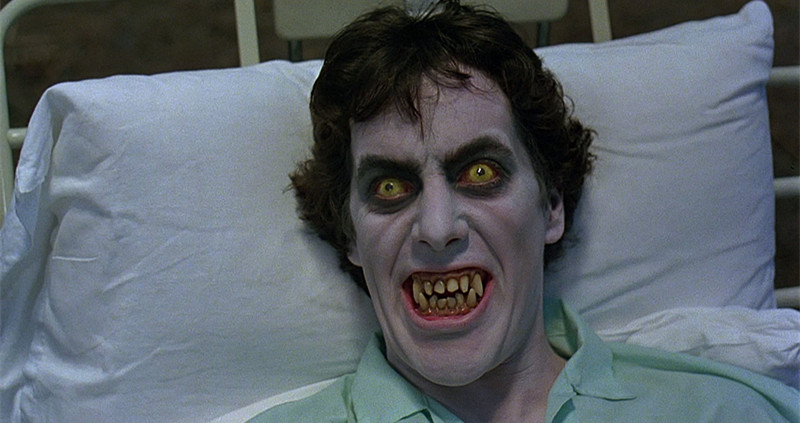
With undeniable and enviable skill, writer/director John Landis’ alternately frightening/funny film, An American Werewolf in London has withstood the passing decades because of its genius balance of horror, dark comedy, and drama.
You can’t help but root for David Kessler (David Naughton), such a nice mannered young lad, but then again, after an unfortunate hike over the moonlit moors of Scotland––which he was warned to steer clear of––he keeps transforming into a nasty AF werewolf that delights in tearing people to pieces. As an added perk for his victims their torture goes on, cursed to roam and rot until Dave himself dies and the werewolf curse along with him.
Rick Baker’s practical special effects are genius, truly this film has the best werewolf transformation sequence of all time.
Aside from bending genre rules along to a perfect CCR-soaked soundtrack, An American Werewolf in London provides the added freakout; you will NEVER comfortably walk through a subway station ever again, ever.
23. Hellraiser (1987)
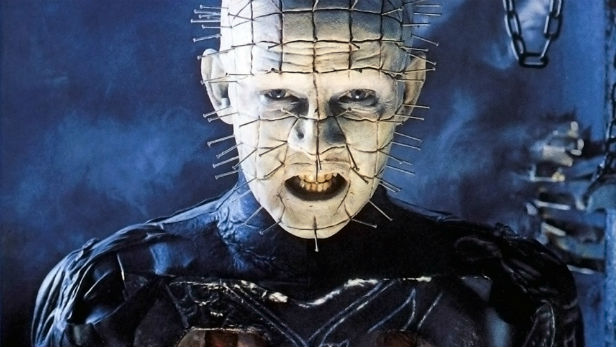
Clive Barker brought terror, psychosexual symbolism, S&M, and a new horror icon dubbed Pinhead (Doug Bradley), gnashing and snarling into the world with this transgressive, subversive, and shocking directorial debut. Based off his own novella, Hellraiser is a cruel celebration of deviant horror, primal trauma, and fucked up Freudian imagery.
Barker’s Cenobites (extradimensional beings summoned via sex magick, with a predilection for pleasure through pain) led by the aforementioned Pinhead combine with surreal imagery that jump started a series of spinoffs and sequels that are still subjugating fans far and wide and back in 1987 Stephen King famously dubbed him “the future face of horror.”
Hellraiser also succeeds as a startling satire of Marquis de Sade’s explicit proclivity and fetish as well as being a great example of 1980s horror done right. As Pinhead proudly proclaims: “We have so much to show you.”
22. Nosferatu the Vampyre (1979)
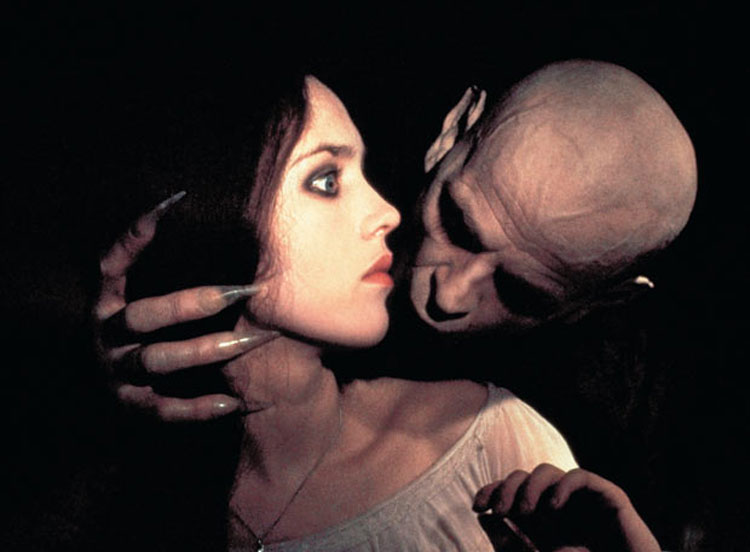
Werner Herzog’s redaction of F.W. Murnau’s 1922 German silent horror classic is a mesmerizing mindfuck with a terrifying Klaus Kinski in the titular role. With touches of the surreal and some deliberate deviations from the familiar Bram Stoker tale of Dracula and his relocation to a more settled estate, Herzog’s vision is frequently apocalyptic and more macabre than you might expect.
Jonathan Harker (Bruno Ganz) is a real-estate agent from Wismar, Germany, who treks through the Carpathian Mountains to tailor the relocation of the despondent Count Dracula from his imposing castle. Once there the Count is instantly infatuated with a portrait of Jonathan’s his wife, Lucy (Isabelle Adjani), and he agrees at once to relocate his estate to Bremen.
Expectedly, things get dark pretty quick and the sparring between Kinski and Adjani is lyrical, fantastical, and frightening. Paced unusually for a horror film, Herzog’s approach is stylish and hypnotic, full with black humor business and slowly scary reveals there really isn’t another vampire film quite like this eccentric and enduring specimen.
21. Re-Animator (1985)
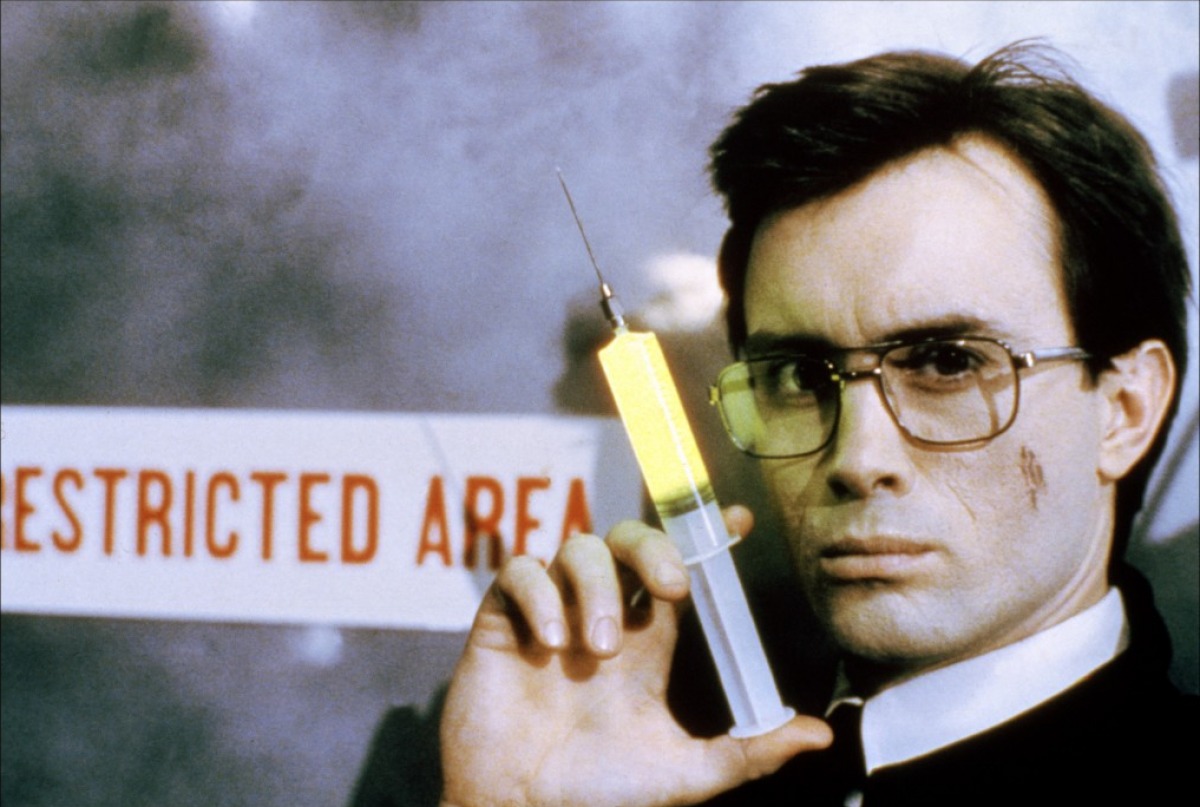
Stuart Gordon’s fast-paced, funny, and wonderfully bombastic adaptation of H.P. Lovecraft is a quintessential 1980s B-movie with lasting charm, trash appeal, loads of explicit sexual perversion and serrated social criticism. Sound like a mouthful? It is!
Gothic sensibilities pair with splatter comedy and genius practical effects as Gordon and producer Brian Yuzna (also a legend in cult horror from that era) hilariously and horribly revise the mad scientist trope and make an iconic antihero in Herbert West (Jeffrey Combs) and his arch rival Doctor Hill (David Gale).
Easily Gordon’s most enjoyable film, and the first in the Re-Animator franchise, it’s an irresistible little shocker that’s as disturbing as it is comical and is, make no mistake, a genuine genre original. Not to be missed.